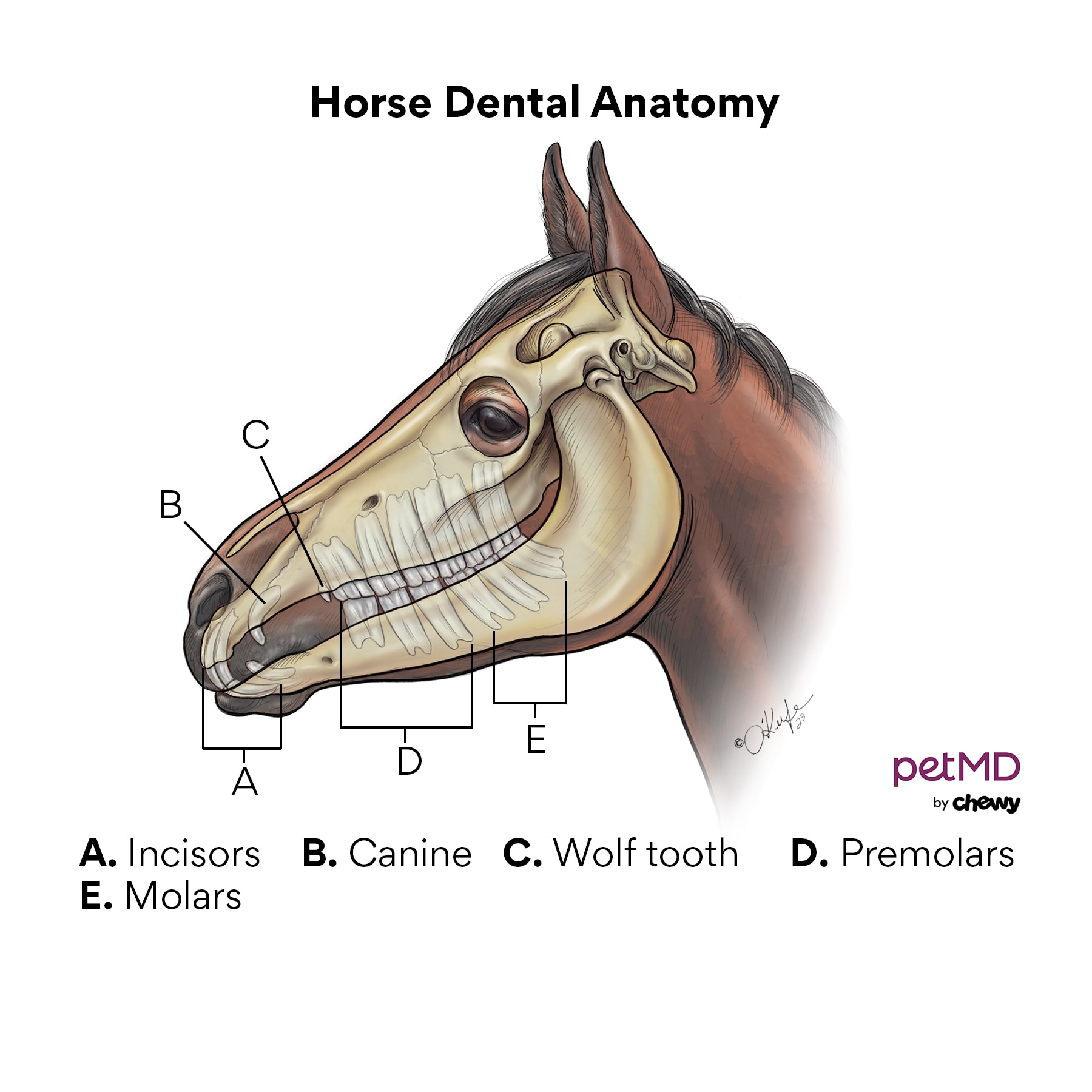Wolf Teeth in Horses
What Are Wolf Teeth in Horses?
Wolf teeth can also be called the first premolar. They are positioned just in front of the first cheek teeth in the horse's mouth. Most commonly wolf teeth are found in the maxilla or upper jaw but can also develop in the mandible or lower jaw.
While not all horses will develop wolf teeth, it is estimated that approximately 70% of horses do. Horses can develop wolf teeth unilaterally (one-sided) or bilaterally (both sides). These teeth usually grow in the mouth at 5–12 months of age. Unlike other cheek teeth, these premolars or wolf teeth do not continue to grow into the mouth through life.
History shows that millions of years ago, wolf teeth were similar to cheek teeth and were used for grinding. At that time, wild horses were smaller, forest dwelling browsers (eating different parts of woody vegetation) instead of grazers (eating mainly grasses). Due to their diet, wolf teeth were more prominent to allow them to eat twigs and brush.
Over the years, horses have evolved to be grazers. This evolution caused the wolf tooth to become relatively small and redundant thus leading to the modern horse having no need for wolf teeth.
While not all horses will develop wolf teeth, it is estimated that approximately 70% of horses do.
The development of wolf teeth is not gender related, as fillies, colts, and geldings are all equally likely to develop wolf teeth.

Click here to download this medical illustration.
Can Wolf Teeth Cause Problems in Horses?
Today, wolf teeth hold no function for the modern horse. Generally, wolf teeth do not pose any health risks, but just like any tooth, they can become fractured or infected.
Do Wolf Teeth in Horses Need to be Removed?
The decision to remove wolf teeth is one that you should discuss with your veterinarian. Though wolf teeth generally do not pose any additional health risks, they can interfere with bit placement in the mouth for performance horses. Most trainers will recommend removing wolf teeth before a horse starts training usually as a two-year-old but they can be removed at any age.
Wolf Tooth Removal
Wolf tooth removal is often performed at a horse's first dental float or at the time of castration. During either procedure, the horse will be given sedation and local anesthetic such as lidocaine. Then using an elevator tool, the gum will be cut around the wolf tooth which allows stretching of the surrounding periodontal ligament to loosen the tooth. The tooth can then be grasped and removed with forceps. Depending on the size of the wolf tooth (which can vary greatly) this can take a few minutes to 30 minutes.
As with any tooth extraction, it is always important to make sure to get the entire tooth and root to prevent any chance of a tooth root abscess later. It is also important that a horse be up-to-date on vaccines, especially tetanus before any procedure. Tetanus bacteria thrive in small wounds with little to no oxygen, making the mouth an optimal environment for it to develop.
Featured Image: iStock.com/mgstudyo
References
1. Paul Pion DVM, Spadafori G. Wolf Teeth in Horses. Veterinary Partner. 2017.
2. Easley J. Dental Development of Horses - Horse Owners. Merck Veterinary Manual. 2022.
3. Evans, Patricia. Jack, Nancy. Aging Horses by Their Teeth. Utah State University Equine Extension.
